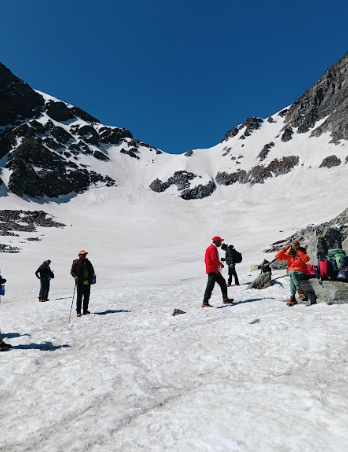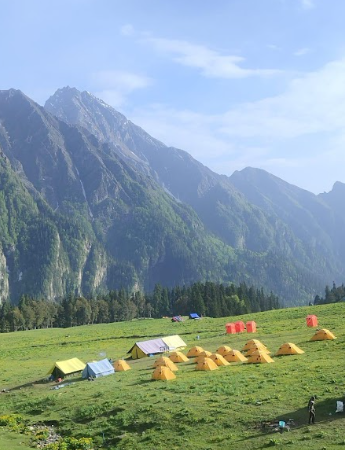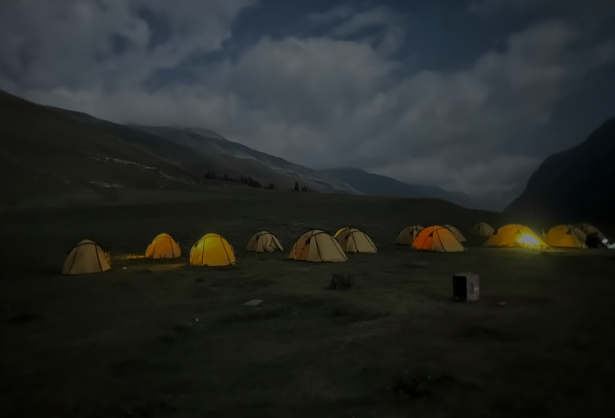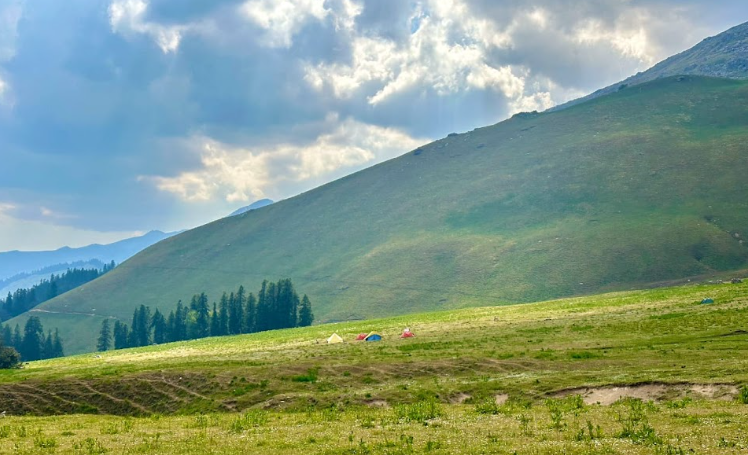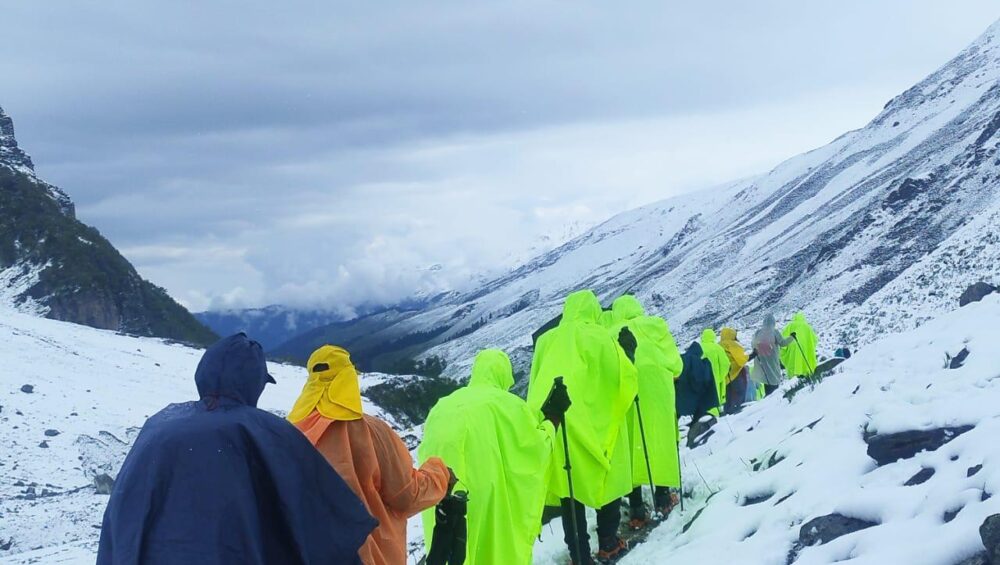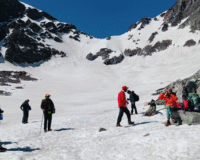Buran Ghati Pass Trek: A Hidden Himalayan Journey Beyond the Ordinary
Deep deep in the heart of Himachal Pradesh, Buran Ghata Pass Trek is a hidden gem between Indian Himalaya trails. This walk is known for its ancient beauty, different scenarios, and exciting alpine challenges, and captures all the things that the Himalaya makes royal and unforgettable. Near the remote valleys, dense forests, glaciers and snow-filled passes, Burn Ghat is not just a trek is an experience that speaks to the soul of brave people. Introduction to the Buran Ambush Buran Ghat Pass, also known as Birdo Pass, is located at an altitude of about 15,000 feet above sea level. It connects the Jungle Village of Pabbar Valley to the Barua in the Kinnur region. This walk is observed for its dramatic infections – from thick cedar forests to icy walls to running through trips. Baran Ghati can make another tree: a spontaneous mix of beauty and challenge. This brand is ideal for experienced traits and brave beginners, and combines cultural specialization with the greatness of the raw Himalayas. This has constantly increased in popularity between Indian and international tractions, but it still retains the spirit of a striking route. How to reach the first point The tour starts in a small village Janglik located in the Rohru region of the Himachal Pradesh. To reach the forest, you usually travel to Shimla, taking a long drive through the curved mountain roads. The journey from Shimla to the jungle takes about 8-10 hours from the road, often a local Jeep or 4×4 vehicle for the final stretch. What does Buran-Bakhold do unique Buran Ghati stands out because of its enormous natural variation in a short period between the Indian trek. Within a few days, trackers experience lush green valleys, alpine meadows, frozen streams, long pine forests, high altitude snow transitions, and exciting descents. The landscape changes almost every day. One of the most exciting parts of the trip is the vertical ice wall descent after crossing the passport. Depending on the season, this section may require ropes, crampons, or guided rappelling. It adds a hint of rock climbing which is otherwise a classic alpine. The trip is also home to Dayara Meadoj and Sundar Chandranhan Lake. The lake is sacred to the locals and remains frozen for most years. Located near the source of the Pabbar River, the lake is more than 13,000 meters away and is often discovered as an acclimatization increase before crossing Buran Ghat. Flora, Jeeva and Himalaya Silence Under the Buran Ghati Trek is a persistent area surrounded by natural beauty. The lower height is rich in oak, pine and maple trees. When you climb these forests for wildflowers, you find grasslands during the spring and summer months. The high regions, especially nearby, are clear, cold and dramatic with wide scenes with snow -covered slopes and surrounding peaks. Trekers can also see the Himalayas’ Wildlife, such as the blue sheep, monals (state birds of Himachal Pradesh), foxes, and even elusive snow leopards. Birdsong, the rushing of the air through the forests, and the lack of ice under your shoes is the only voice that occurs with you – follows the deep feeling of peace and loneliness for experience. Trekking Difficulty and Weather Burn Ghati Pass Trek is considered difficult to be the most moderate, depending on weather conditions and ice level. The total duration is about 7-8 days, with traction hours between 5 and 7 hours per day. While most scars fit are manageable for beginners, you pass crossing endurance, acclimatization and sometimes technical assistance. Those who try it should be physically prepared and ideally have experience with a high altitude. The best time for Trek Buran Ghat is either from the middle of June or from September to mid-October. In the summer, ice cream combines with beautiful white landscapes and exciting ice glass. In post-monsoon weather, the sky is clear, the meadows are green, and the route is less smooth. On the other hand, the monsoon should be avoided due to landslides and scar volatility. Similarly, the winter months buried under deep snow, which made it inaccessible to most people pull. Camp under the stars One of the true joys of Buran Ghat Trek is the experience of the camp. The camps are set in fantastic places, open grasslands in the park, near the ice. On clear nights, the sky of an astronomical dome is filled with stars, shoots meteor and distant galaxies. The feeling of insulation and relationships with nature increases with these unforgettable Himalaya networks. Trek operators often arrange group patches, complete with rat tents, sleeping bags and portable toilets. Leirbatians, mountain stories, and tea-vaporizing cups bring warmth and camaraderie after a long day of walking. Village Life and Local Culture The tour begins and begins in traditional Himalayan villages such as Jungle and Barua. These settlements give a glimpse of the lifestyle to society at great height. Wooden and stone houses, traditional dress, terraced agriculture and warm hospitality define people here. In the jungle, villagers are used to welcoming hikers, and a home is offered in many homes. In Barua you will find Kinnuri effects and apple gardens that dots the valley. Local people provide a sharp contrast to the slow pace, simplicity and robust lifestyle of life and leave a permanent impression on visitors. Passage of passage Crossing the Buran Ghat pass is the decisive moment of the trip. When you get to the top, the air becomes thin and the climb becomes strenuous. But the scenes from the top are unmatched-the lines covered lines, deep valleys and strong prospects of distant tops make each step worth each step. The descent from near, often on ice, is a fantastic trip. At the beginning of the summer, some sections also pull down using guides. This part of the journey often becomes a favorite memory due to a mixture of adrenaline and pure Himalaya beauty. Conclusion Baran Ghati Pass Trek exceeds a brand – it is a story that appears with every day, each


